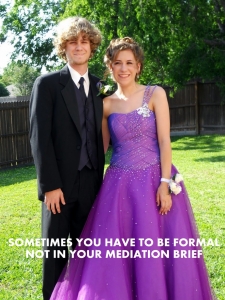The Elephant in the Mediation Conference Room
Sometimes the issues the lawyers and adjusters are discussing are not what is most important to the Applicant.
Recently, in a pretty small case, the professionals told me the disagreements were about what had been paid and what was still due. The injured worker told me his biggest concern was that, although he had returned to modified duty, the employer had told him there was no more work for someone with his disability. The injured worker was terrified that he would be out of a job with no ability to get another one, but that is not what the lawyers were discussing.
Many times, the injured worker’s biggest issue is not one that is dispositive of any issue in the case, but, in fact, is the driver for the injured worker’s decisions– the proverbial elephant in the room the negotiators are trying to ignore.
Because these are often personal matters, the injured worker may not share these concerns with the employer’s side– or even the injured worker’s own lawyer.
- The woman with a sick teen-aged son who desperately wanted to control her own industrial medical care, but was afraid that if she C&R’d her case, the lump sum payment would result in the family’s loss of Medi-Cal which provided care for the son.
- The man suffering from non-industrial cancer whose biggest concern was leaving an estate to support his wife.
- The injured worker who wanted to return to his home country, but feared that expressing that desire would diminish the value of the claim.
These issues can often be discovered and resolved through mediation. Parties can express their concerns to the mediator confidentially. Once the mediator knows the real issue, the mediator can often re-frame the issues to allow the parties to reach resolution– all without breaching confidentiality.











